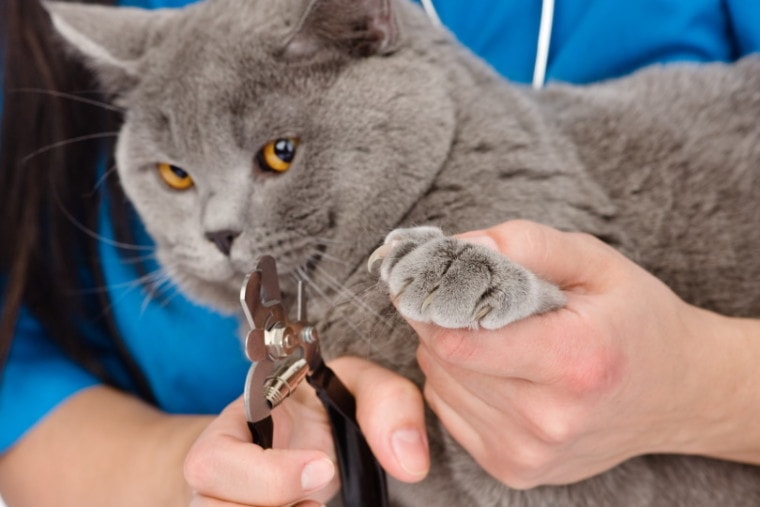
Cats are generally low-maintenance pets that provide lovable, furry companionship. However, not every part of owning a cat or a kitten is easy. As with any pet, you take on many responsibilities when you adopt them. These include giving them exercise, feeding them, and brushing them. You also have to work with them on any behavioral problems that they have. You need to have patience and willingness, as there’s no such thing as the perfect pet.
One of the most destructive and irritating behaviors that a cat can have is when they use their sharp little claws to scratch up your furniture. Why is your cat scratching your couch, and how do you stop this negative behavior?
This article covers the reasons that cats scratch, declawing your cat, the methods that you can use to control the behavior, and the steps to go from scratched couches to scratching posts.
Cats and Scratching Behavior
The best way to deal with negative behavior in any pet is to understand why they do it. If you can redirect that focus or change the need for the pattern, then it’s generally a much faster process.
Cats are natural scratchers. It’s essential to understand that you aren’t trying to train out their instinct to scratch, you just want to redirect their attention away from the furniture.
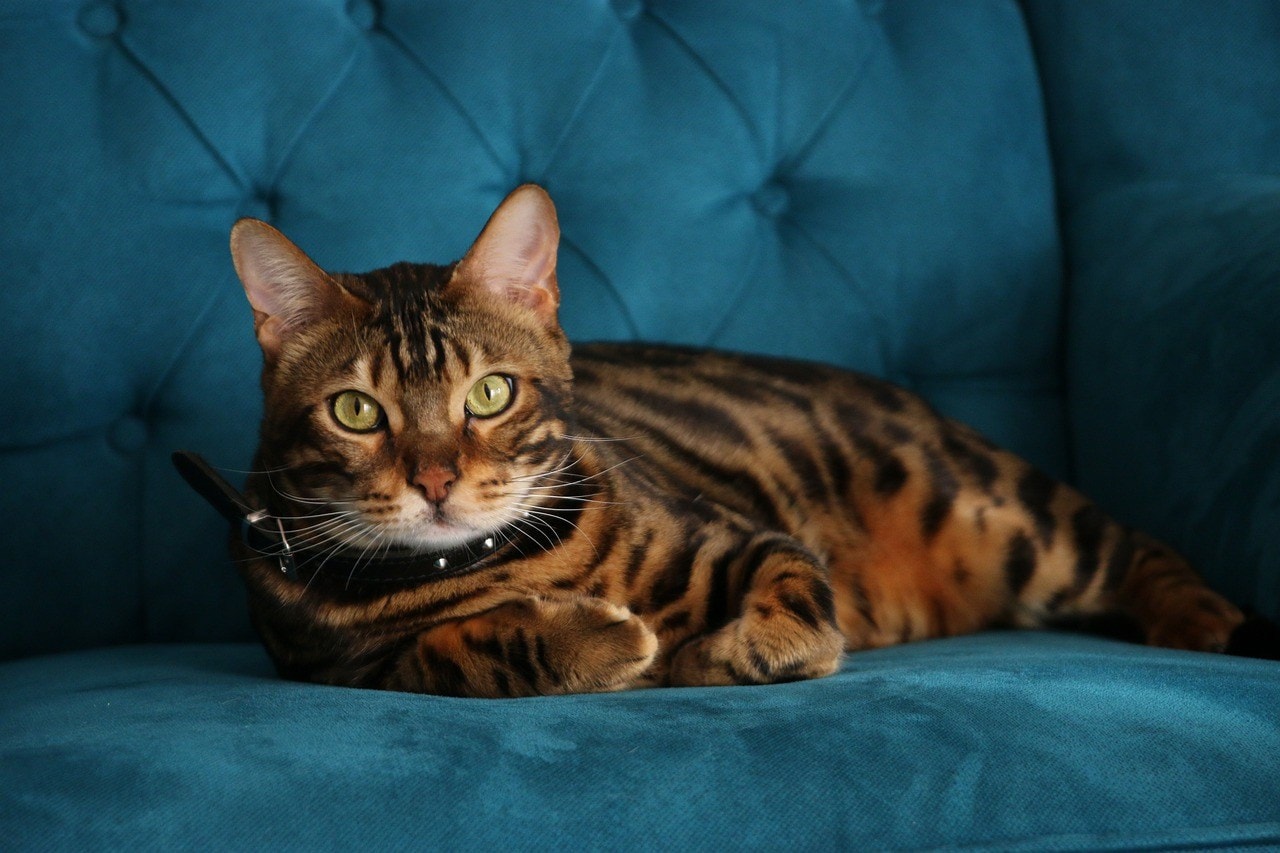
In the wild, they need to scratch to give themselves a natural manicure, removing the dead layer from their claws and keeping them sharp. Domesticated cats don’t have quite the same needs, so why are they still interested in scratching?
Should You Declaw Your Cat?
The easy solution for many cat owners over the last several decades has been to declaw their cats. Then, they literally can’t scratch the couch.
However, declawing a cat is a painful and challenging procedure that can present many future problems for your cat and you.
The procedure to declaw a cat involves amputating the last bone on each of their toes so their claws will never regrow. It is the same idea as taking off each of your fingers’ last segments so your nails would never grow back. You would still be able to use your hands, but you would have less finger length and no nails.
Since cats walk on their paws, it changes everything for them. It makes it more difficult for them to walk and jump because it is much harder to balance than before. The surgery is also rife with possible complications.
Declawing has been banned as an inhumane act in many countries and made illegal throughout various cities in the U.S.
Although declawing or not is still your choice as a cat owner, there are other methods that you can use if you want to train your cat to not scratch your couch and other furniture.
Keeping your cat's nails trimmed is important, but it's no one's favorite task. You can make it easier with great clippers designed specifically for cats. We like Hepper's Cat Nail Clipper Set, a convenient combination of medium and small clippers that comes in a handy pouch. These sharp stainless steel clippers allow for precision trimming, with the added protection of built-in safety guards. Plus, there's a hidden nail file!
At Pet Keen, we've admired Hepper for many years, and decided to take a controlling ownership interest so that we could benefit from the outstanding designs of this cool cat company!
The 5 Methods to Stop a Cat From Scratching Your Couch and Other Furniture
We start with a few methods and different kinds of products that people often use in the training process. Often, these are only necessary during training. Once your cat learns where to direct their scratching, you won’t have to worry about continually wrapping or spraying your furniture.
1. Provide them with a scratching “outlet.”
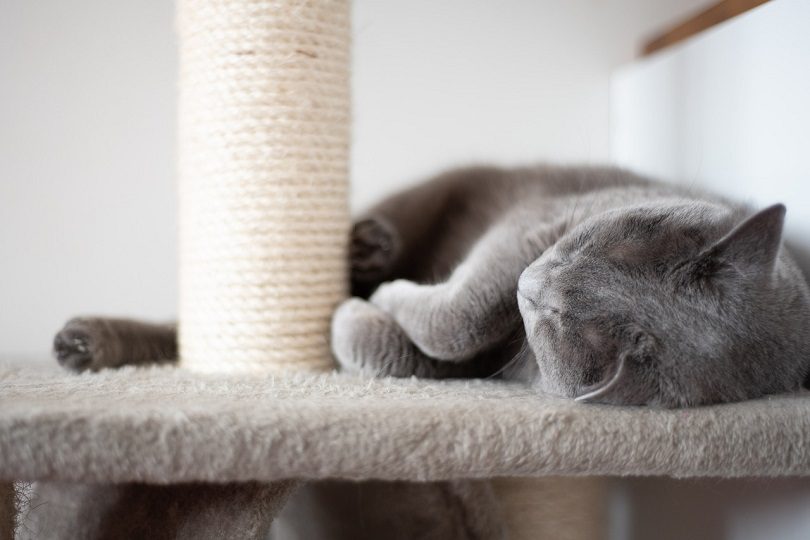
Finally, it’s essential to provide them with an outlet to take their scratching out. Even a cat that has been declawed will continue to try and scratch, demonstrating that it is an ingrained and entirely natural tendency.
Scratching posts are the most common outlets that people give their cats and are essential to their training.
- Related read: 5 DIY Cat Scratching Posts You Can Build Today
2. Use cat-scratch tape.
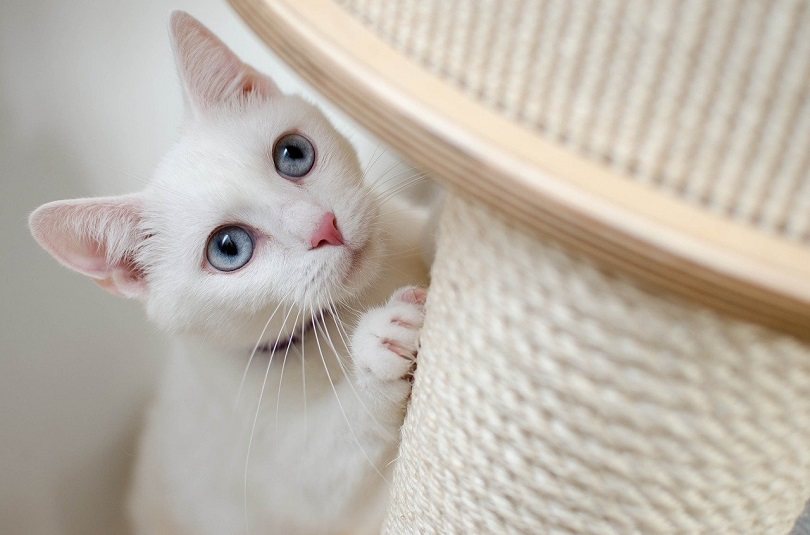
Cat-scratch tape is useful for making furniture unappealing to your cat. Felines are texture-sensitive, especially on their paws. A cat enjoys scratching. They do it partially because it feels good
Putting cat-scratch tape on furniture makes it unappealing for a cat to scratch. You should put it right over the spot that they usually target, so their paws will run across it as they go.
Remember that all cats are different. Some hate the feeling of the tape, while others won’t mind it. Luckily, it’s a small investment to make even if the trial doesn’t go ideally.
3. Put socks or nail caps on their feet.
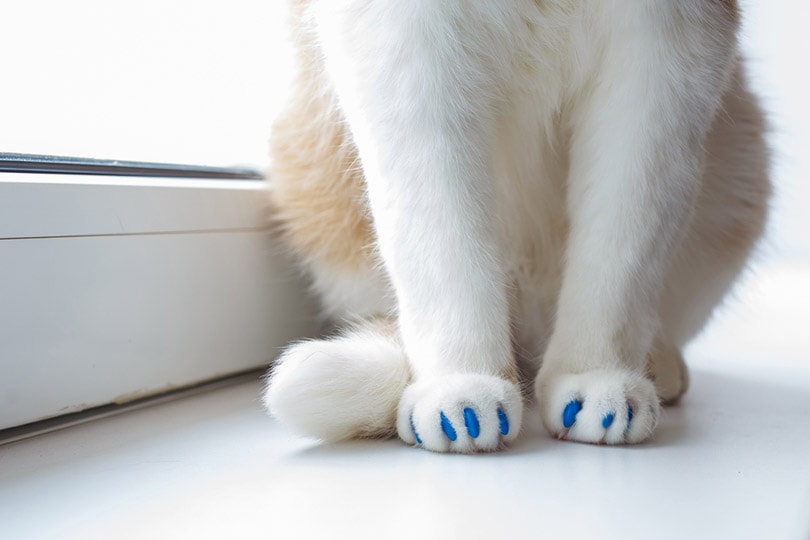
Instead of removing your cat’s claws entirely, you can protect your furniture by temporarily dulling them. Nail caps cover their sharp nails and effectively blunt them. They can still use their nails, but they won’t be destructive.
You can use adhesive with the caps. That way, you can slide one over each nail, and it will stick on for longer.
Some people like the translucent caps so they don’t make their cat’s paws look odd, while others prefer vibrant colors so it is easier to find them when they fall off.
Nail caps are excellent while you work through the training process because they lower the risk of anything happening to your couch while you and your cat work through the process.
4. Use cat-scratch spray.
One way to get your cat to avoid the furniture is to use cat scratch spray. Spraying it on an area will help them limit their destructive scratching or make them want to avoid that piece of furniture.
5. Install vinyl panels.
Directly protect your couch by temporarily installing vinyl panels that cover the sides of the furniture. Putting these around the furniture will not look great, but you should only have to do it while you train your cat.
Vinyl panels make the sides of your couch inaccessible to your cat’s dangerous nails. Even if they do try to scratch, nothing should happen to the fabric on the other side.
How to Stop a Cat From Scratching Furniture
Whenever you train a behavior into or out of one of your pets, you must have patience. It can sometimes take a while to change and redirect an instinctive action, especially if you waited a while to do anything about it.
Stopping and starting your training will exponentially increase the time that the process takes. Trying something once without positive results is not indicative of the result. Instead, try something consistently for a couple of weeks before attempting something new. If you notice any positive behavioral change, even a small one, then reward it.
1. Purchase the right scratching post.
Start the process by purchasing a scratching post. If you can, try to find one that mimics the fabric of their favorite area to scratch. You already know that they like that texture, so it is less of a risk.
You may have to try several posts out in the long run, especially if you have more than one cat. However, give each one time before swapping it out, or you may confuse the cat.
2. Place the scratching post strategically.
The next step is to place the scratching post in the right spot to help make it appealing to your animal.
Choose a place that your cat already likes to be. This special area could be near their favorite spying window or in the room where the family hangs out if your cat is sociable.
Remember that one significant reason that cats scratch is to mark their territory. If you tuck the post into an unused corner, they are much less likely to want to make it theirs. Often, cats like to have a good scratch after a nap. If they have a regular sleeping area, this could be another prime spot to place it.
If you notice your cat coming over to investigate the new post, even from afar, reward them. You want them to associate this scratching post with positive things. The more they interact with it, the more you should praise and reward them.

3. Make the furniture temporarily unattractive.
The next step is to make the couch unattractive to them. Use cat tape, spray, or vinyl lining to make it unappealing. Then, when they want to scratch, they will hopefully turn to the scratching post.
If they go to a different piece of furniture, repeat the protection process until their only satisfying option is the scratching post.
4. Build interest in the scratching post.
Once you have made their primary scratching area unappealing, make the scratching post as exciting as possible. You can sprinkle it with catnip or use their favorite toys to direct them toward the post. Have them chase a wand toy up the post so they can feel how great it is on their claws.
5. Deploy extra furniture safety measures if necessary.
If your cat is still trying to scratch the furniture, continue to make more of the furniture unattractive by combining the previous methods.
At the same time, make the scratching post as attractive as possible. Try moving it to a better area or keeping it out in the center of the room until they become attached to it — somewhat literally.
6. Enjoy your scratch-less couch.
Once it is firm in your cat’s mind that the couch is not a fun place to scratch and the scratching post is the best, you can take off the protective measures one at a time. Don’t do this too early, so your cat doesn’t see their primary option returned to its “fun” state again. Before you entirely remove the protections, their favorite choice should have become the post.
When they are finally best friends with the post, you can sit back and relax. Don’t let the post get too ratty, though, or they won’t want to keep using it. It is best to replace the post with the same product, so you don’t test their texture tolerance, and all should be well in the world of your furniture.
Related Reads:
- How to Trim Your Cat’s Nails at Home (With Video)
- How to Protect Your Cat’s Paws from Hot Pavement (5 Tips)
- Are Nail Caps Safe for Cats? What You Need To Know!
Featured Image Credit: Ermolaev Alexander, Shutterstock








